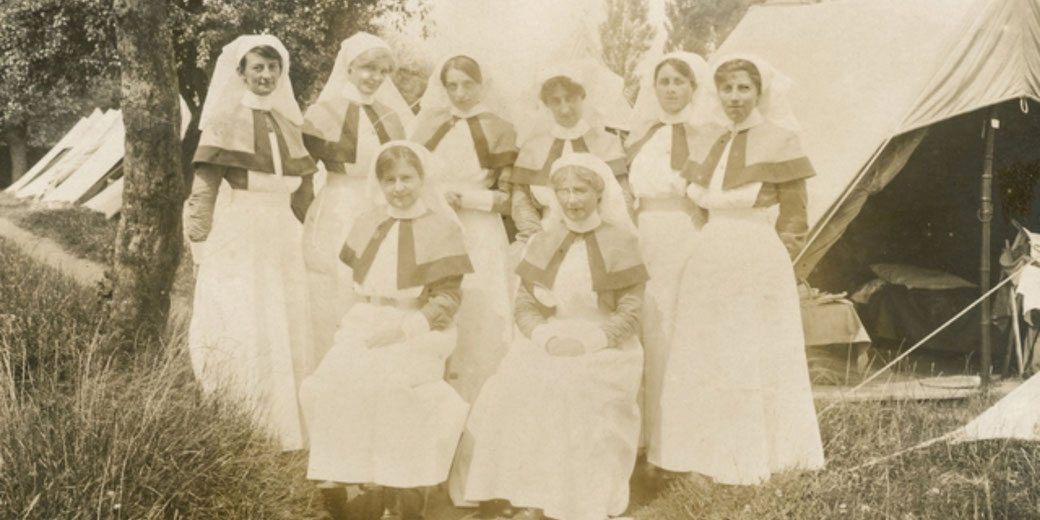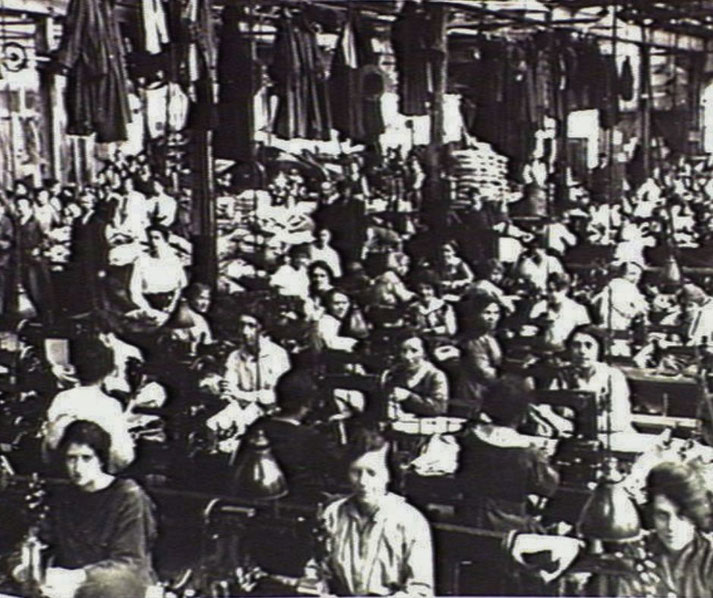Her war too: The crucial role of women in World War One

At the dawn of the 20th century, the world was on the brink of unprecedented upheaval. As tensions mounted and nations mobilized, a war of a scale previously unknown to humanity was on the horizon.
When World War One broke out in 1914, it was a conflict that required total mobilization of society. However, while the histories often revolve around the actions of generals and soldiers, there is an equally critical narrative that is often overlooked - the pivotal role women played in the war.
Social expectations of women before the war
Before the onset of World War One, societal expectations and norms for women were vastly different from what they would become throughout the course of the war.
The early 20th century was a time when gender roles were starkly defined and generally adhered to.
Women were expected to devote themselves to non-economic roles — primarily homemaking and rearing children — while men engaged in paid employment outside the home.
These norms were so deeply ingrained that women participating in the workforce or taking on public roles was largely considered inappropriate, if not outright scandalous.

The early feminist movement, however, was already making waves in the decades preceding the war.
In addition, the suffragettes and suffragists were fighting for women's right to vote and greater social equality.
Nonetheless, the scope of women's societal roles was still predominantly restricted.
Most women were denied access to higher education and were legally dependent on their fathers or husbands.
When they did gain employment, women were largely confined to roles deemed suitable for their 'delicate nature', such as domestic service, teaching, and some areas of factory work.
Moreover, the jobs women could take were often poorly paid and had long working hours.
Women on the home front
With the outbreak of World War One, the home front became a crucial theatre of war.
As millions of men marched off to fight, women were left behind to keep the home front running.
This meant not only maintaining their households, but also taking over the farms and businesses left behind by their husbands, sons, and brothers.
One of the most striking transformations took place in agriculture through the formation of the Women's Land Army in countries like the UK.
With most of the male agricultural workforce away in the trenches, women filled the gap by working in the fields, growing crops and raising livestock to ensure that the nation had enough food to feed both the civilian population and the troops.
The work was physically demanding and the hours were long, but these women showed remarkable resilience and adaptability.
Ultimately, they successfully maintained the nation's food supply throughout the war years.
Meanwhile, at home, women still bore the brunt of managing wartime households.
The war brought rationing and shortages, and women had to display considerable resourcefulness to feed and care for their families.
They also took on the emotionally challenging role of keeping up morale among family members: all while living in uncertainty and fear for their loved ones at the front.
Entering the workforce
When the guns of World War One began to fire, an urgent demand for labor arose on an unprecedented scale.
With a significant proportion of the male population away at the front, women were called upon to fill the labor vacuum, particularly in industries crucial to the war effort.
One of the most notable sectors where this shift occurred was in factories. While women had previously worked in certain factory settings, the war required them to take on heavy industrial work in sectors like munitions production.
Often known as 'munitionettes', these women worked in difficult and hazardous conditions, producing the weapons and ammunition that were vital to the war effort.
Despite the countless risks, they proved themselves as efficient and competent as their male counterparts.
Another critical sector was transportation: women took up roles as bus conductors, tram drivers, and railway guards.
These were all jobs that had previously been almost exclusively male domains.
In addition, sometimes women also stepped into roles in postal services and police forces.
The civil service, too, opened its doors to women in a significant way during the war.
With a large portion of civil servants away at the front, women were recruited to fill positions in government departments, often taking on administrative and clerical work.
While not as physically demanding as factory or farm work, these jobs were of utmost importance to the smooth functioning of the wartime state.

Nursing wounded and dying soldiers
As World War One raged and casualties mounted, the need for medical and nursing services increased exponentially.
Women's contribution ranged from serving as professional nurses to volunteering in auxiliary services and driving ambulances.
Many women, such as those in the Queen Alexandra's Imperial Military Nursing Service in the UK, were formally trained and served near the front lines.
Their role was to provide essential medical care to the wounded.
These nurses often worked close to the fighting, and they showed immense courage and resilience to help suffering soldiers.
In addition, voluntary organizations, such as the Voluntary Aid Detachment (VAD), saw thousands of women - many of whom were middle and upper-class women with no prior experience or training in nursing - offer their services.
These volunteers carried out a variety of tasks, from nursing wounded soldiers to providing comfort and emotional support.
They served both in hospitals in their home countries and at the front.
Another remarkable group of women served as ambulance drivers. They often came from organizations like the First Aid Nursing Yeomanry.
They transported wounded soldiers from the front lines to field hospitals, which was no small task given the perilous conditions, the urgency, and the emotional toll of their work.
Women in the military
The notion of women serving in the military was, at the outset of World War One, almost inconceivable given the societal norms of the time.
Nevertheless, the urgency of the war eventually paved the way for women to take on roles within the military itself.
Although women did not serve in combat roles, they were integral to the war effort in many supporting roles.
One of the most prominent was the Women's Army Auxiliary Corps (WAAC), formed in the UK in 1917.
This organization was the first official use of women in the British army. While they were not enlisted as soldiers, the women of the WAAC served in a variety of non-combat roles, such as clerks, telephone operators, cooks, and waitresses.
Importantly, their contributions freed up more men to fight in the front lines by ensuring that essential support services ran smoothly.
Similarly, the Women's Royal Naval Service (WRNS or 'Wrens') and the Women's Royal Air Force were created, with women serving in capacities ranging from mechanics and engineers to dispatch riders and clerical workers.
In other countries, such as Russia, women even served in combat roles. The 'Battalion of Death', for example, was a women's battalion that saw active service on the Eastern Front.
Their role in anti-war activism
While women played essential roles on the home front, in the workforce, in healthcare, and in the military during World War One, they also made significant contributions as activists.
One notable aspect of women's activism during the war was their involvement in the peace movement.
Across the world, women spoke out against the war and campaigned for its end. In 1915, for example, the Women's Peace Congress was held in The Hague, bringing together over a thousand women from various countries to call for a peaceful resolution to the conflict.
Simultaneously, many women saw the war as an opportunity to further their fight for gender equality.
The suffragettes in the UK, who had been campaigning for women's right to vote since the late 19th century, used their contribution to the war effort to leverage their cause.
Despite a split in the movement over whether to support the war effort, many suffragettes took on war work while continuing to advocate for their right to vote.
Their efforts were eventually rewarded in 1918 when the Representation of the People Act granted voting rights to certain women over the age of 30.
Also, as women filled roles traditionally held by men, many women began to demand equal pay for equal work, marking an early push for wage equality.
Although progress was slow and often met with resistance, these early efforts laid the groundwork for future labor rights movements.
How lives for women changed as a result of WWI
The impact of World War One demonstrated that women were capable of much more than what societal norms had previously allowed.
As a result, the war challenged and altered the pre-war patriarchal order and the stereotypical gender roles, setting the stage for the social transformations of the 20th century.
One of the most significant changes was the expansion of women's suffrage following the war.
In recognition of their contributions to the war effort, many countries, including the United Kingdom, the United States, Germany, and others, granted women the right to vote in the years immediately after the war.
While suffrage was not universal and many women (particularly women of color and working-class women) remained disenfranchised, this marked a crucial step towards gender equality.
However, the post-war period also brought its own challenges. Many women who had entered the workforce during the war were expected to give up their jobs to returning soldiers, leading to tensions and dissatisfaction.
Further reading
What do you need help with?
Download ready-to-use digital learning resources
Copyright © History Skills 2014-2025.
Contact via email
With the exception of links to external sites, some historical sources and extracts from specific publications, all content on this website is copyrighted by History Skills. This content may not be copied, republished or redistributed without written permission from the website creator. Please use the Contact page to obtain relevant permission.





